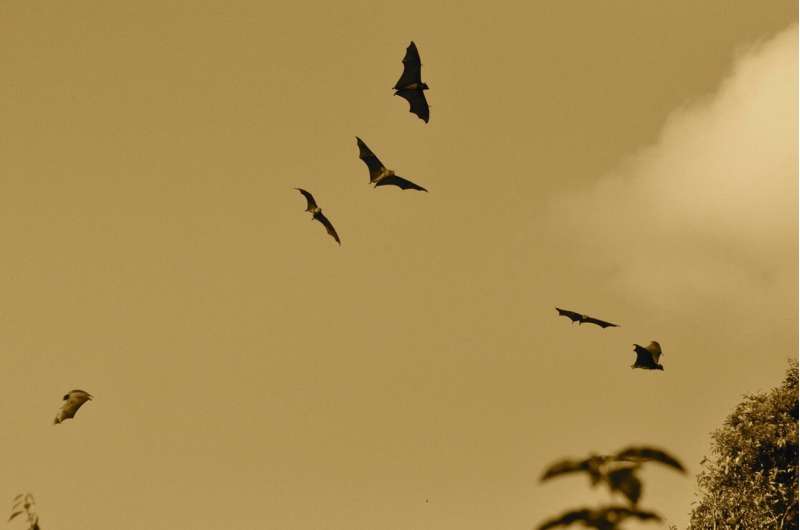This article has been reviewed according to Science X's editorial process and policies. Editors have highlighted the following attributes while ensuring the content's credibility:
fact-checked
trusted source
proofread
Using airborne DNA to track bats

Catching bats is a difficult task—they're small, they fly and they blend into the night when they're out after dark. That can make studying these mammals challenging, despite their ubiquity: bats are found on nearly every part of the planet except the most extreme hot and cold, and they're all over Arizona.
Scientists, including Faith Walker, an associate research professor in the School of Forestry, are looking for other ways to locate which bats live where, how they migrate and where they've been. Recent efforts in this work have led them to pulling DNA directly from the air and tracking bats through environmental, or eDNA.
"Capturing eDNA is often preferable to other methods of DNA collection because bats are notoriously difficult to study," she said. "We can collect DNA when we use mist-nets to catch bats, but the nice thing about eDNA is that it's less stressful for the bats and is less expensive since you don't have to support a large field team. Further, it can also give exciting results by capturing DNA of surprising, rare or endangered species."
In theory, the idea is simple. Scientists capture eDNA using air filters. Those are active filters placed over a battery-powered fan pushing air through the filters. They're also experimenting with passive filters, which don't have a fan and rely on regular air movement to move air through the filter.
To test the filters, Walker's collaborators at York University in Canada deployed these passive filters in a rainforest in Belize. The first part of the test worked; the captured material sent to Walker for analysis showed eDNA from five bat species. It also picked up DNA for birds, geckos and domestic animals, which was unsurprising on its face; the nature of this collection method means a variety of DNA will get into the filters.
Separating out the different animal DNA isn't challenging, but the variety of DNA available did raise questions. For example, Walker said, they found DNA of an African bat, thousands of miles from where the animal would be. There's actually an easy explanation for that—one of the researchers studied bats in Africa before studying them in Belize. Future testing will have to take into account the sensitivity of the tests and how scientists can avoid contamination.
It also doesn't answer every question. The team knows certain species of bats were in the region tested. They don't know how many bats were there, how long they stayed, whether they were afflicted with white-nose syndrome or how many bats were in the region. And it's impossible to generalize among bats—different species do wildly different things. eDNA offers only hints as to where bats are, or at least where they have been. But it's a good start not only in understanding bats but in protecting them and their ecosystems.
"Taking advantage of airborne DNA will allow us to determine biodiversity, including that of bats, in different habitats," Walker said. "Since biodiversity is being negatively affected by things like habitat loss and fragmentation, it's essential to know what is present so we know which areas to try to protect."
Provided by Northern Arizona University


















